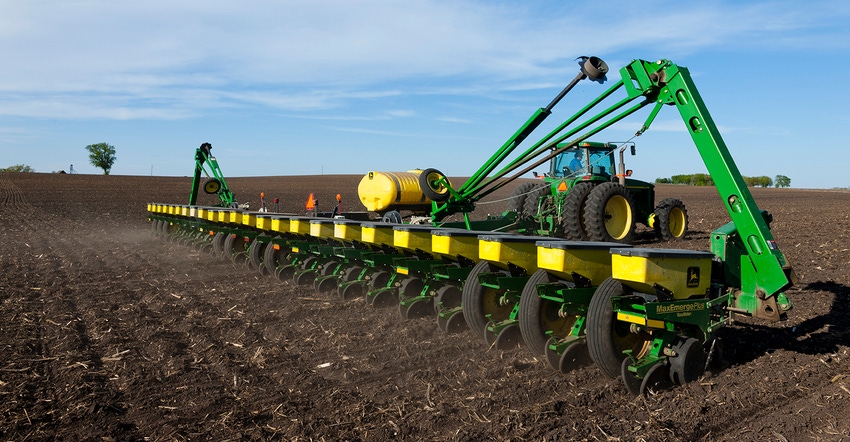
Surely as the sun rises and sets, March will give way to April and planters will start rolling across Midwestern fields. With commodity prices so strong and input prices so high, there’s a lot on the line this season and farmers will want to get started as soon as possible. But what will Mother Nature have to say about that?
Paul Pastelok, long-range meteorologist with AccuWeather, has his eyes on the eastern Corn Belt.
“I’m a little concerned there will be a lot of wet weather there in April,” he says. “The beginning could be a little tense with some delays. Will farmers skip corn and go right to soybeans?”
On the other hand, when farmers are faced with planting delays, they tend to recover rather quickly once fields have a chance to dry out, Pastelok adds. It’s hard to say where this year’s planting “sweet spot” will be, where everything happens without a hitch, but Pastelok says current forecasts look promising for northern Iowa, southern Minnesota and Wisconsin.
Farther west, optimism is also in solid supply, according to Brian Fuchs, climatologist with the National Drought Mitigation Center.
“The western Corn Belt is especially dry and even with significant moisture, I would not anticipate this being a setback to planting – more so a welcome occurrence, as most producers from Illinois westward are experiencing quite dry/drought conditions,” he notes. “There is a lot of current capacity in the soils to utilize more moisture if it becomes available.”
Looking at Nebraska, Kansas and the western half of the Dakotas, those areas have experienced a very dry winter, Fuchs says. That could be concerning for both grain and livestock producers moving forward.
“An early warm-up will only enhance the loss of soil moisture and deplete any reserves in place quickly without a change in our pattern,” he says. “The outlooks show warm and dry conditions to continue to dominate the Midwest and Plains.”
Current La Niña patterns mean the odds toward current conditions may be stable this spring, adds Doug Kluck, regional climate services director for NOAA’s National Centers for Environmental Information. That is, areas that are already wet may stay that way, and vice versa.
“The Central and Southern Plains tend to be warm and dry, while the Ohio Valley and Great Lake areas tend to be wet in the spring,” he says. “The current short and longer-term outlooks appear this way as well.”
According to the latest data from USDA, 34% of corn production and 25% of soybean production is within an area experiencing drought.
About the Author(s)
You May Also Like






